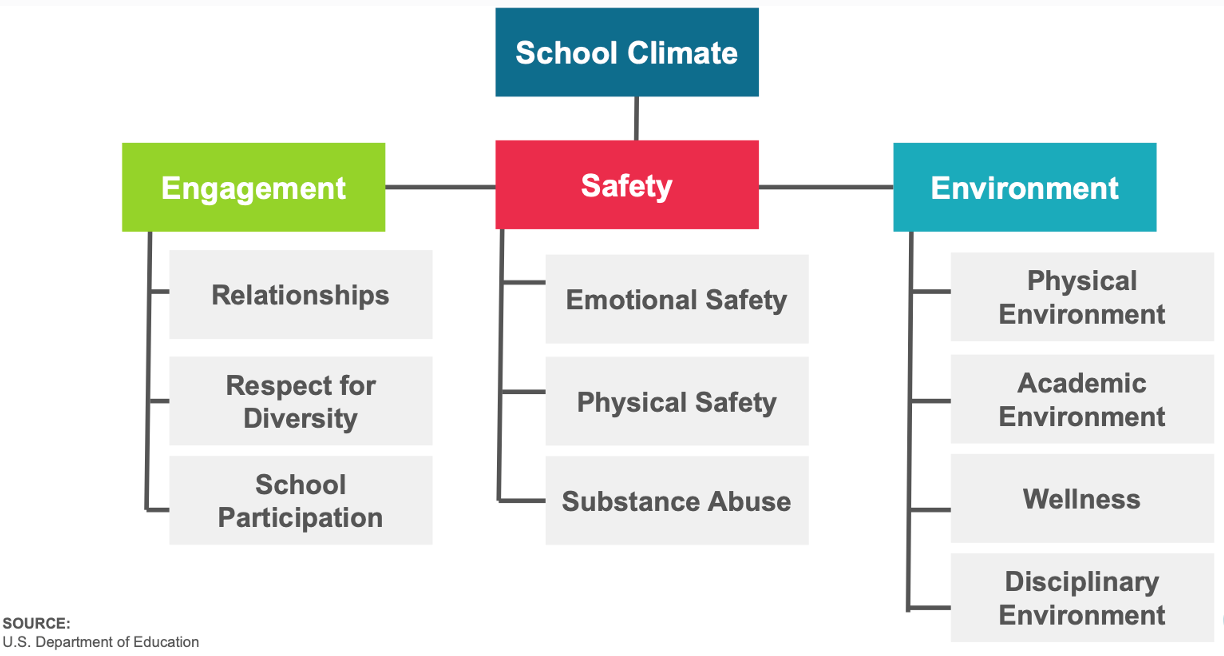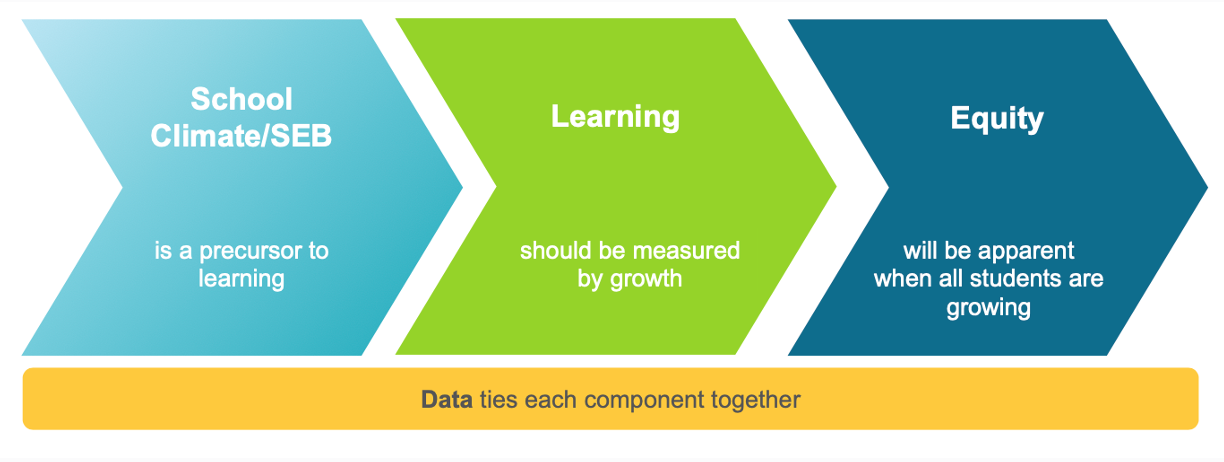An Equity-Based Approach to Supporting SEB Functioning
Educators around the country are working to ensure all students are mentally and emotionally ready to restart learning. In order to do so, it’s important to understand and support social-emotional behavior (SEB) needs.
In this blog, we’ll unpack how SEB functioning, growth, and equity connect to one another. Although it might sound a little surprising, especially in a year marked by remote and hybrid learning for many communities, this starts with school climate and culture.
What is School Climate and Culture?
School climate refers to the physical, social and emotional environment, or “feel” of a school. It’s a result of many factors, but it can be summed up as:
- How engaged students are by their teachers
- How welcomed they are by their peers
- How invested their family is in helping them achieve their best
There are various elements that comprise school climate including engagement (i.e., relationships, respect for diversity, participation), safety (i.e., emotional and physical), and environment (i.e., physical, academic, disciplinary).
Along with climate, school culture is equally important. Typically, it refers to the long-term physical and social environment, as well as the values or beliefs of the school shared across individuals and time (National School Climate Center, FAQ’s About School Climate, n.d.).
Climate is the “attitude or mood” of the school and the culture as the “personality or values” of the school. Climate is perception-based, while culture is grounded in shared values and beliefs (Gruenert, 2008).
When we unpack school climate, we find key social-emotional and wellness elements. But many of those elements are currently at-risk. So, it’s important to focus on those at-risk school climate elements to help students succeed this year, no matter where learning takes place.

Considerations around COVID, Remote Learning & Other Forms of Trauma
Certainly, with the impact of COVID, these areas around engagement, safety, and environment have been dramatically affected. Students have experienced trauma in various forms—from losing their daily routines and a sense of community to carrying the stress of their parents/guardians and seeing loved ones get sick. These events can both directly and indirectly impact a student’s ability to focus in class or connect with their peers and teachers.
This extended period of remote learning can also be particularly challenging for kids. Besides the lack of a shared physical surrounding, students may also feel more tempted to disengage or tune out during sessions. Some might even struggle with having reliable access to the Internet or devices. Not to mention, it’s going to be harder for teachers to accurately assess and monitor student performance in the absence of a controlled environment.
In light of this, we need to work to continue ensuring that the classroom environment is structured in a way that makes students feel safe. Consider scheduling short one-on-one meetings to check in with disengaged students. Think of ways to develop a space in which all students can feel comfortable sharing candidly about their experiences. Also, be careful to prioritize student relationships over class performance during this time.
Without a positive school climate, it's going to be difficult to help them rebuild or develop skills and continue learning.
Ensuring Equity By Using SEB Data
As it relates to equity, viewing our students’ SEB needs through the context of school climate provides a clear path to ensure all students are growing.

First, we have to acknowledge that school climate and SEB are a precursor to learning. Once we apply this whole child approach to every student, we can track learning and student progress by measuring growth for all. As a result, equity will be apparent when all students are growing. Throughout each of these components, data is the main tool that ties it all together.
In order to do this, we need the ability to slice data in ways to ensure our efforts are both effective and equitable. Knowing where students are will help us to better plan for our students and what their needs are. We can interrupt those inequitable practices by examining our biases and creating inclusive school environments for all students.
How Do We Support SEB Through Equitable Practices?
So, as we consider how to move from the measures to actual practices, I want to highlight some key pieces. In particular, it would involve the three key areas of PBIS, social skills instruction, and emotion regulation:

Want to learn more? Watch our webinar on-demand here, presented by Jaime Harris, Ed.S., NCSP, co-founder of eduCLIMBER.
*****
Illuminate Education equips educators to take a data-driven approach to serving the whole child. Our solution combines comprehensive assessment, MTSS management and collaboration, and real-time dashboard tools, and puts them in the hands of educators. As a result, educators can monitor learning and growth, identify academic and social-emotional behavioral needs, and align targeted supports in order to accelerate learning for each student.
Ready to discover your one-stop shop for your district’s educational needs? Let’s talk.

